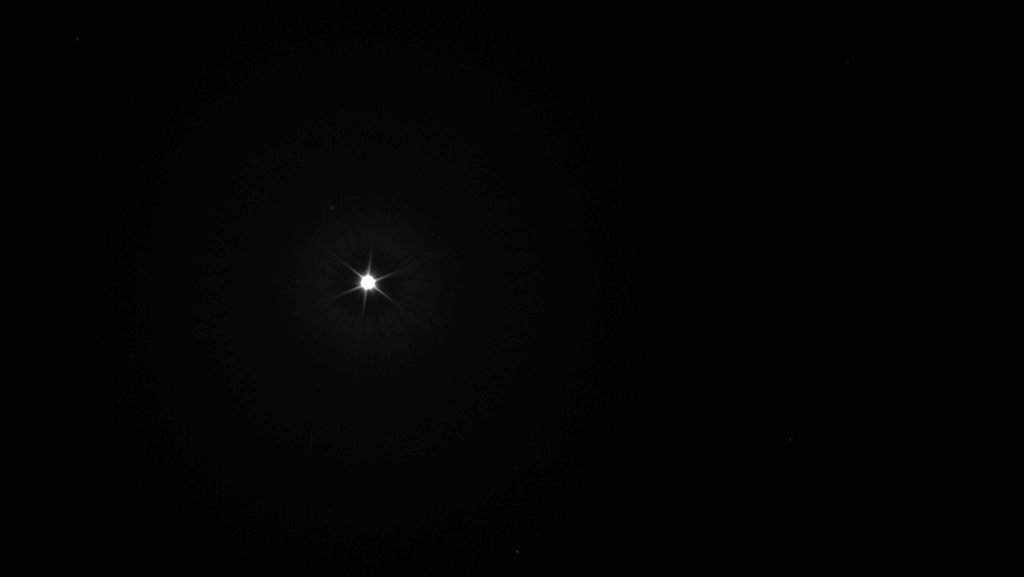In a bid to figure out light scattering, NASA’s asteroid-smashing mission did a bit of star-spotting while cruising to its destination.
The agency’s Double Asteroid Redirection Test mission, also known as DART, took an image of the bright star Vega on May 27, NASA said in a statement (opens in new tab) Friday (June 17). DART, launched on Nov. 24, 2021, is on a 10-month-long journey to a binary asteroid system called Didymos.
The goal of the stellar imaging campaign was to see how much stray light is captured in DART’s main imager, known as the Didymos Reconnaissance and Asteroid Camera for Optical navigation (DRACO), mission officials stated.
“We specifically wanted something bright, and Vega is bright,” Carolyn Ernst, DRACO instrument scientist at the Johns Hopkins University Applied Physics Laboratory, said in the statement.
Related: NASA’s DART asteroid-impact mission explained in pictures
“We’re taking a series of images and looking for light that could scatter off parts of the camera, and end up where it shouldn’t be,” Ernst added. “We’re doing both long and short exposures to get different measures of what the scattered light can be.”
Vega, which is just 25 light-years away from Earth, is one of the brightest stars in our planet’s sky. The star is a part of the constellation Lyra and, with the stars Deneb and Altair, forms an asterism known as the Summer Triangle.
DRACO took two black-and-white images of Vega. The first, directly pointed at the star, was intentionally saturated for a scattered light test. You can see the saturation as “spikes” in the fringe of the star, which are due to “the diffraction pattern from the structure holding the camera’s secondary mirror in place,” NASA stated.
The second image from DART put Vega deliberately outside of the camera’s field of view, to see its “halo-like glow,” NASA said. The glow happened due to Vega’s light “scattering off various parts of DRACO and onto the detector,” the agency added.
The images will be used to calibrate DRACO ahead of DART’s big event, when the spacecraft smashes into the moonlet Dimorphos, which orbits around the larger space rock Didymos. The cosmic crash is expected to take place in late September.
Testing images like the one of Vega will “ensure the DRACO camera is optimally calibrated, and able to make accurate measurements when the spacecraft finally sets its sights on its asteroid target,” NASA said.
DART plans to release a small CubeSat built by the Italian Space Agency called LICIACube about 10 days ahead of the impact. The CubeSat will watch in real time as DART smashes into Dimorphos, while astronomers will observe the asteroid pair’s response to the impact using ground-based telescopes. They hope that DART will be able to somewhat alter the orbit of Dimorphos around Didymos, a technique that could one day be used to deflect an Earth-bound asteroid.
Then in 2024, the European Space Agency (ESA) plans to launch a surveyor mission called Hera, which will fly over to the asteroid system to look at the resulting crater once the dust settles, and study the physical structure and chemical composition of the two asteroids.
Follow Elizabeth Howell on Twitter @howellspace. Follow us on Twitter @Spacedotcom and on Facebook.

